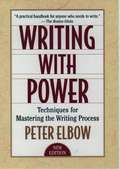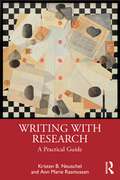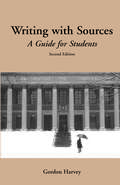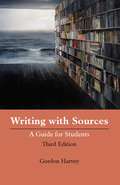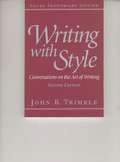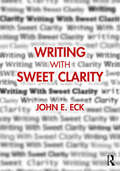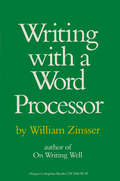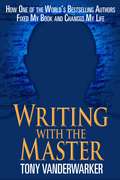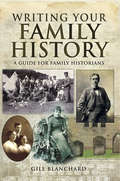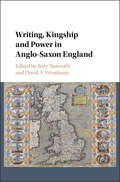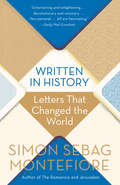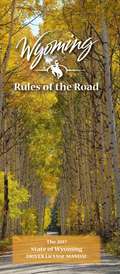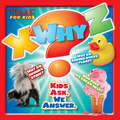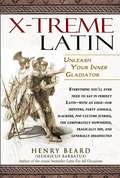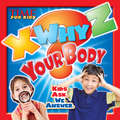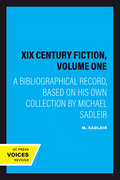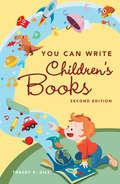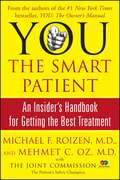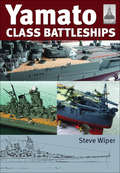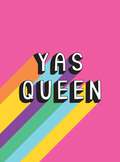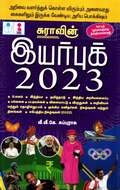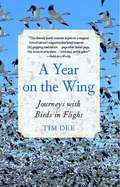- Table View
- List View
Writing with Power: Techniques for Mastering the Writing Process,Second Edition
by Peter ElbowEmploying a cookbook approach, Elbow provides the reader (and writer) with various recipes: for getting words down on paper, for revising, for dealing with an audience, for getting feedback on a piece of writing, and still other recipes for approaching the mystery of power in writing. In a new introduction, he offers his reflections on the original edition, discusses the responses from people who have followed his techniques, how his methods may differ from other processes, and how his original topics are still pertinent to today's writer. By taking risks and embracing mistakes, Elbow hopes the writer may somehow find a hold on the creative process and be able to heighten two mentalities--the production of writing and the revision of it.
Writing with Research: A Practical Guide
by Kristen B. Neuschel Ann Marie RasmussenWriting with Research offers readers practical guidance for managing writing and research as combined tasks. Kristen B. Neuschel and Ann Marie Rasmussen bring expert advice from their extensive experience as writers, researchers, and teachers, making this an indispensable, user-friendly guide to research-based writing.This book describes how to launch writing and researching together and how to continue the work as an iterative, not linear, process. It explores the challenges of finding time for writing and research, and offers tips on how to make progress, even in short writing and researching sessions. It describes the steps necessary for responsible research in the contemporary digital environment, including the role Artificial Intelligence might play and how to map arguments as they emerge through writing. This book offers readers the tools to confront stumbling blocks like procrastination. It shows the benefits of building writing communities and how to make use of feedback at various stages of a project.The short and easily digestible chapters make this a go-to resource for a wide audience, from students, professors, and scientists to professionals. Writing with Research helps all researchers find the resources they need to be successful and encourages them to think of themselves as writers, now and into the future.
Writing with Sources: A Guide for Students
by Gordon HarveyDeveloped for Harvard University's Expository Writing Program, Writing with Sources describes the main principles and methods of integrating and citing sources in scholarly work, and provides cogent guidance on avoiding the misuse of sources.The second edition of Writing with Sources is updated throughout, and includes new material on the roles sources play in argument, on assessing the reliability of sources, and on attitudes about writing that can lead to plagiarism.
Writing with Sources: A Guide for Students
by Gordon HarveyThe challenges of integrating and citing sources in academic work have expanded in scope and complexity in the digital age, but the basic principles and guidelines for doing so responsibly remain the same. The third edition of Writing with Sources is updated throughout, providing more examples of the proper use and citation of digital and print sources across disciplines—including current conventions specific to MLA, The Chicago Manual of Style, APA, and CSE citation styles—while preserving its concise and accessible format.
Writing with Style: Conversations on the Art of Writing (2nd Edition)
by John R. TrimbleThe author discusses writing and its techniques with quotations and examples.
Writing with Style: Conversations on the Art of Writing (3rd Edition)
by John R. TrimbleThis bestselling brief text is for anyone who needs tips to improve writing. Writing with Style is a storehouse of practical writing tips and is written in a lively, conversational style. This text provides insight into: how to generate interesting ideas and get them down on paper; how to write a critical analysis; how to write a crisp opener; how to invigorate a dull style; how to punctuate with confidence; how to handle various conventions, and much more. This is the third edition.
Writing with Sweet Clarity
by John E. EckIn this book, criminologist and experienced educator John E. Eck draws on decades of academic and professional writing experience to provide an analytical toolkit for clear professional writing. This book focuses on the essential objective of clarity, and addresses topics seldom addressed in other books, such as ethics beyond plagiarism; writing with co-authors; organizing complex ideas; using analytics to improve writing; crafting strong beginnings and endings; using examples and metaphors; and integrating tables, charts, and diagrams. As universities continue to demand writing-intensive courses in the social sciences, this book is indispensable in university settings and throughout a professional career. The reader will use the practical advice, examples, and exercises in this book to master a method for clear writing unimpaired by stereotypical academic jargon. The book will help both new and seasoned researchers seeking to translate their work into a clear and accessible presentation for both professional and lay audiences. Designed for and field-tested with graduate and advanced undergraduate students, this lively and easy-to-read book will work for courses taught in criminology, sociology, geography, and other social sciences, and will enable scholars to extend and broaden the impact of their research.
Writing with a Word Processor
by William ZinsserIn this helpful and entertaining book the author of the classic On Writing Well explains that he has always had a love of paper and a fear of mechanical objects. He describes how he confronted his hang-ups, got a word processor, taught himself to use it and gradually overcame his sense of inferiority to the machine. He explains how the word processor--by enabling him to revise his work instantly on a screen--has changed his lifelong methods of writing, rewriting and editing.But William Zinsser's book isn't only for writers. It's for all the people who have to do any kind of writing--memos, letters, reports, directives--as part of their working day. It explains how the word processor will save time and money in an office or a corporation and predicts that it will soon be our primary writing tool.On one level Writing with a Word Processor is a manual for beginners that describes clearly and simply how to use the new technology. But it is also one writer's story. William Zinsser takes the reader along on a highly personal journey, writing with warmth and humor about his anxieties and fears, his setbacks and triumphs. His book is both an informal guide and an encouraging companion.
Writing with the Master: How One of the World?s Bestselling Authors Fixed My Book and Changed My Life
by Tony VanderwarkerWith seven unpublished novels wasting away on his hard drive, Tony Vanderwarker is astonished when John Grisham offers to take him under his wing and teach him the secrets of thriller writing. "The beginning and the end are easy," Grisham tells him. "It's the three hundred pages in the middle that's the hard part."To ensure his plot doesn't run out of gas, Grisham puts Tony though his outline process. Tony does one, and then Grisham asks for another ... and another ... and another. As they work together, Grisham reveals the techniques that have helped him create compelling bestsellers for more than two decades-for instance, "You've got to hook your reader in the first forty pages or you'll lose them." After a year of constructing outlines, Grisham finally gives Tony the go-ahead to start writing.Writing with the Master immerses the reader in the creative process as Tony struggles to produce a successful thriller. It's a roller coaster ride, sometimes hilarious, and often full of ups and downs. Grisham's critiques and margin notes to Tony reveal his nimble imagination and plot development genius. For Grisham fans, Vanderwarker's memoir pulls back the curtain on his writing secrets, and for aspiring writers, it's a master class in thriller writing.In the end, Tony resolves to take Grisham's teachings to heart and eventually decides to write what he thinks he was meant to: a book about the creative process and his incredible two years working with John Grisham.
Writing your Family History: A Guide for Family Historians
by Gill BlanchardGill Blanchard's practical step-by-step guide to writing a family history is designed for anyone who wants to bring their ancestors' stories to life. She looks at ways of overcoming the particular problems family historians face when writing a family history -- how to deal with gaps in knowledge, how to describe generations of people who did the same jobs or lived in the same area, how to cover the numerous births, marriages and deaths that occur, and when to stop researching and start writing.Her book provides examples to help readers find their own writing style, deal with family stories, missing pieces of information and anomalies. It also offers advice on key aspects of composition, such as adding local and social history context and using secondary material. The focus throughout is on how to develop a story from beginning to end.Exercises are a key feature of the text. There is guidance on the various formats a family history can take and how to choose the appropriate one, with examples of format and layout. Production and publishing are also covered -- books, booklets, newsletters, websites, blogs and ebooks.
Writing, Kingship and Power in Anglo-Saxon England
by David A. Rory Naismith WoodmanThe workings of royal and ecclesiastical authority in Anglo-Saxon England can only be understood on the basis of direct engagement with original texts and material artefacts. This book, written by leading experts, brings together new research that represents the best of the current scholarship on the nexus between authority and written sources from Anglo-Saxon England. Ranging from the seventh to the eleventh century, the chapters in this volume offer fresh approaches to a wide range of linguistic, historical, legal, diplomatic and palaeographical evidence. Central themes include the formation of power in early Anglo-Saxon kingdoms during the age of Bede (d. 735) and Offa of Mercia (757-96), authority and its articulation in the century from Edgar (959-75) to 1066, and the significance of books and texts in expressing power across the period. Writing, Kingship and Power in Anglo-Saxon England represents a critical resource for students and scholars alike with an interest in early medieval history from political, institutional and cultural perspectives.
Writing, Reading, and Research (9th Edition)
by Richard Veit Christopher Gould Kathleen GouldThis text is a composition course that prepares students for the tasks they will face during their college and professional careers developing skills in writing, reading and analyzing information.
Writing: A College Handbook (5th edition)
by James A. W. Hefferman John E. Lincoln Janet AtwillThe Fifth Edition exemplifies in clear, engaging prose the skills that students need to communicate in a wide variety of rhetorical contexts. A reliable and easy-to-use reference tool and an up-to-date rhetoric and research guide, Writing: A College Handbook invites students to discover the power of effective writing.
Written in History: Letters That Changed the World
by Simon Sebag MontefioreOutstanding selection of great letters from ancient times to the 21st century, touching on power, love, art, sex, faith, and war.Written in History: Letters that Changed the World celebrates the great letters of world history, and cultural and personal life. Bestselling, prizewinning historian Simon Sebag Montefiore selects letters that have changed the course of global events or touched a timeless emotion—whether passion, rage, humor—from ancient times to the twenty-first century. Some are noble and inspiring, some despicable and unsettling, some are exquisite works of literature, others brutal, coarse, and frankly outrageous, many are erotic, others heartbreaking. It is a surprising and eclectic selection, from the four corners of the world, filled with extraordinary women and men, from ancient times to now. Truly a choice of letters for our own times encompassing love letters to calls for liberation to declarations of war to reflections on life and death. The writers vary from Elizabeth I and Catherine the Great to Mandela, Stalin and Picasso, Fanny Burney and Emily Pankhurst to Ada Lovelace and Rosa Parks, Oscar Wilde, Chekhov and Pushkin to Balzac, Mozart and Michelangelo, Hitler, Rameses the Great and Alexander Hamilton to Augustus and Churchill, Lincoln, Donald Trump and Suleiman the Magnificent. In a book that is a perfect gift, here is a window on astonishing characters, seminal events, and unforgettable words. In the colorful, accessible style of a master storyteller, Montefiore shows why these letters are essential reading and how they can unveil and enlighten the past—and enrich the way we live now.
Wyoming Rules of the Road: The 2017 State of Wyoming Driver License Manual
by Wyoming Department of TransportationWyoming Rules of the Road - The 2017 State of Wyoming Driver License Manual by the Wyoming Department of Transportation
X WHY Z: Kids Ask. We Answer (Time For Kids X-why-z Ser.)
by Mark Shulman James Buckley Jr.Why do I sneeze? Why don't cats like water? Why does the moon stay in the sky? When it comes to the facts, every child wants to know: Why? Now, with X-Why-Z from Time For Kids, young readers-and their parents-can discover the answers. This book satisfies the never-ending curiosity of children, ages 4 to 6. The easy to follow, question-and-answer format accompanied by colorful photos and illustrations delivers age-appropriate answers to so many questions that kids have. From animals to plants, from the human body to history, from cell phones to smelly skunks, X-Why-Z helps children better understand the world they live in. With more than 200 questions, X-Why-Z will satisfy young readers' hunger to learn and have fun while soaking up information.Brought to you by the award-winning Time For Kids classroom magazine, parents, teachers, and librarians can be sure that X-Why-Z is on-level, informative, and entertaining. X-Why-Z is the perfect reference book to help emergent readers become stronger readers. It's a book that kids will come back to again and again.
X-Treme Latin: Lingua Latina Extrema
by Henry BeardEverything you'll need to say in Latin for hipsters, party animals, slackers, pop-culture junkies, the corporately downsized and generally disaffected
X-WHY-Z Your Body: Kids Ask. We Answer.
by Mark Shulman James Buckley Jr.When it comes to their own bodies, every kid wants to know why. Why do they burp? Why are their friends taller? Why do they look different from a brother or sister? Time for Kids' popular X-Why-Z series for 4-6 year-olds continues with X-Why-Z Your Body. This book will be the ultimate answer book for how we're made, how we communicate, why we act the way we do, and why everyone is different... yet everyone is so much the same. Adults may call it biology, psychology, sociology, and even anthropology in one great book... but kids will just call it fun.
XIX Century Fiction, Volume One: A Bibliographical Record, Based on His Own Collection by Michael Sadleir
by M. SadleirThis title is part of UC Press's Voices Revived program, which commemorates University of California Press’s mission to seek out and cultivate the brightest minds and give them voice, reach, and impact. Drawing on a backlist dating to 1893, Voices Revived makes high-quality, peer-reviewed scholarship accessible once again using print-on-demand technology. This title was originally published in 1951.This title is part of UC Press's Voices Revived program, which commemorates University of California Press’s mission to seek out and cultivate the brightest minds and give them voice, reach, and impact. Drawing on a backlist dating to 1893, Voices Revived</DIV
YOU CAN WRITE Children's Books
by Tracy E. DilsOhio-based author and editor Dils explains how to turn ideas about children's books into published volumes. After reviewing the market as a whole and dispelling some misconception, she covers picture books, beginning readers and chapter books, middle grade and young adult novels, and nonfiction. Then she gets into the nuts and bolts, looking at conventions of style and technique, finding the right publisher, the query and proposal, formatting the manuscript, and creating a writing rhythm. An appendix sets out characteristics of the standard developmental stages. Annotation ©2010 Book News, Inc. , Portland, OR (booknews. com)
YOU The Smart Patient: An Insider's Handbook for Getting the Best Treatment
by Mehmet Oz Michael RoizenEveryone needs to become a smart patient. In fact, in the worst cases, your life may even depend on it. Number one bestselling authors and doctors Michael Roizen and Mehmet Oz have written this indispensable handbook to help everyone to get the best health care possible -- by making everyone into their own medical detective. Witty, playful, at times offbeat, but always authoritative, You: The Smart Patient shows you how to become your own medical sleuth, tracing your medical family tree and wending your way through the pitfalls of any health care situation. Written in conjunction with the health care community's leading oversight group, The Joint Commission, the book shows readers in clear, easy steps how to take control of their own health care and deal with all matters that may come up when facing a medical case: from choosing the right doctor, hospital, and insurance company to navigating prescription drugs, specialists, treatment options, alternative medicine, pain management, or any problem that might arise. Accessible, humorous, and filled with information that you need, You: The Smart Patient is a book for every patient and all those dealing with a loved one's medical issues.
Yamato Class Battleships: Ijn Yamato Class Battleships (ShipCraft)
by Steve WiperThe Japanese Imperial Navy&’s impressive but ill-fated WWII battleships are examined in detail in this fully illustrated modeling guide. The volume in the ShipCraft series offers in-depth information about building and modifying model kits of WWII Japan&’s Yamato-class battleships. These were the largest warships of the Second World War and the largest battleships ever constructed. They also carried the largest naval artillery ever fitted to a warship. And yet, neither Yamato nor her sistership Musashi made much impact on the War. Musashi was sunk during the battle of Leyte Gulf while Yamato, deployed in a deliberate suicide attack on Allied forces at the battle of Okinawa, was finally sunk by US carrier-based aircraft. This lavishly illustrated volume takes the modeler through a brief history of the Yamato class, then provides step-by-step instruction for building a highly accurate model. Also included are hints on modifying and improving the basic kits and information on paint schemes. The strengths and weaknesses of available kits of the ships are reviewed, and the book concludes with a section on further research references.
Yas Queen: Uplifting Quotes and Statements to Empower and Inspire
by Summersdale PublishersYaaaaaaas!Inside you is a fierce, flawless and fabulous queen. Own it! Filled with sassy statements and empowering quotes, this small yet ferocious book will make you want to go out there and slay that sickening realness!
Year Book 2023: ஆண்டு புத்தகம் 2023
by V. V. K. Suburasuஇந்த புத்தகம் போட்டி கொள்ளும் முறைகளுக்கு என்றும் அதிக முக்கியமானது மற்றும் அனைத்து அறிவு விகாரிகளுக்கும் அந்தச் சொற்கள் உள்ளன. குறித்து இந்த புத்தகத்தில் உலகம், இந்தியா, பட்டியல்கள், விளையாட்டுகள் மற்றும் விருதுகளைக் கொண்டு அனைத்து வழிகளும் கொண்டுள்ளது. அதனை கொண்டாட எல்லாருக்கும் இந்த புத்தகம் ஒரு அரிய பருவமாக உள்ளது.
Year on the Wing
by Tim DeeBirds--those "upgiven ghosts" who shape our skies--and their many styles of flying have inspired us for centuries. Enthralled with birds since he was a young boy, Tim Dee describes their allure in compelling, poetic prose as he follows these magnificent creatures on land, at sea, and in the air over the course of a year. A memoir of the author's life as well as a stirring account of bird migrations and the enticements of flight, the book explores the ideas and feelings that birds awaken by their flying. A Year on the Wing is also a significant chronicle of Dee's rich reading of a gorgeous literary and naturalist tradition about birds, and achieves a marvelous commingling of nature and language, finding meaning and a fascinating beauty in the quiver of a redstart's tail, in the thrilling skydiving stoop of the once-endangered now resurgent peregrine falcon, and the nocturnal restlessness of migrant woodcocks. Watching birds instills a renewed sense of wonder in us all, and this beautifully written memoir celebrates birds and the inspiration they give as it expands our horizons.e inspiration they provide through their twice-yearly winged migrations.
